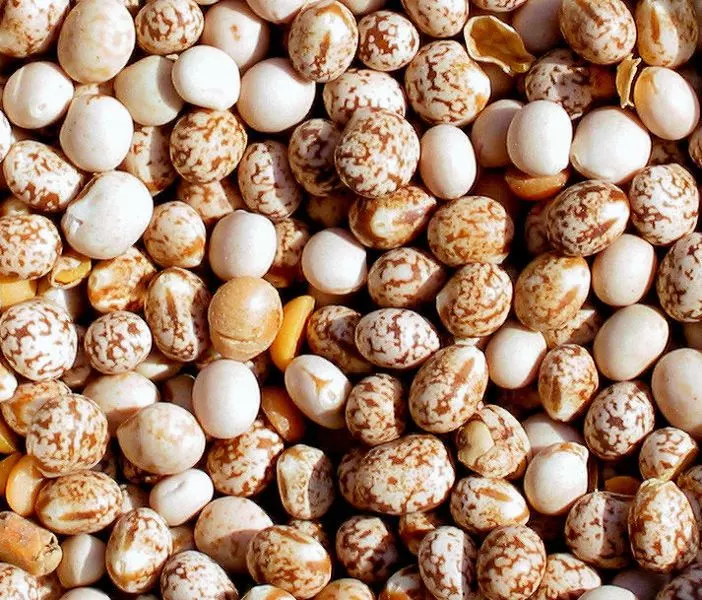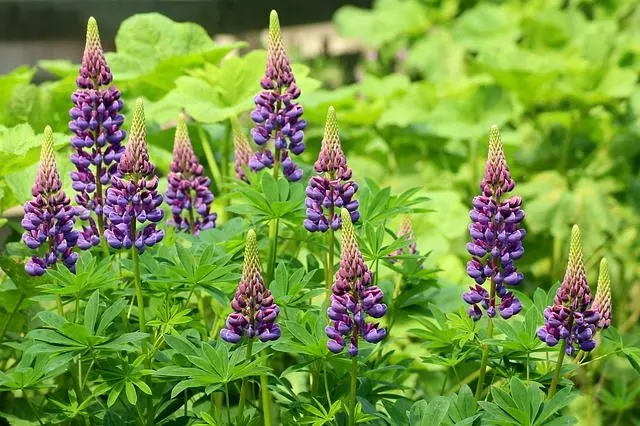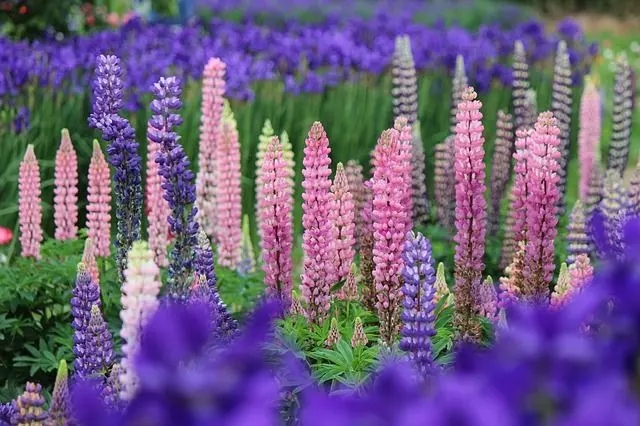Lupine flowers, also known by their scientific name Lupinus polyphyllus is a plant native to the northwestern part of the United States. From there it has spread to a large part of the world for its great ornamental qualities. Learn all about how to plant Lupine seeds in this article.
Lupine is a legume that can be perennial or annual. In the aerial part of the plant, we distinguish two parts, the foliage which is green with alternate leaves, and petiolate. The other part is the flowers by their shape and color we can say that they have their own entity.
Let’s review how to plant Lupine seeds and enjoy these beautiful flowers.
Table of Contents
How to Plant Lupine Seeds
How to Plant Lupine Seeds. To grow Lupine, we need slightly acid soil with a good drainage system. Several of the diseases that can attack this plant are produced by various fungi that, as we know, grow easily in poorly or poorly drained soils. Follow these steps to learn how to plant Lupine seeds.
- Soak the Lupine seeds overnight.
- Prepare a substrate rich in organic matter and with good drainage, if you want to improve drainage you can add perlite.
- Measure the soil pH. If you want to learn how to measure the soil pH this is our recommended article.
- Place the Lupine seeds on the soil and cover them with a thin layer of soil again.
- Make sure the seedlings have a temperature of at least 64 °F (18 °C) to germinate properly, because if the temperature is lower, they may not germinate.
- In approximately 10 to 20 days the seeds will germinate.
- Plant performance may be improved by using a homemade rooting hormone with lentils.
- In the early spring, Lupine flowers can be propagated through seeds or cuttings.
Best time to plant Lupine seeds. Remember the best time to plant Lupine from seed is in the spring. Another way to multiply lupine is by division and this will be done in early autumn, as soon as the flowering period is over. You should buy lupine seeds here.
Lupines are short-lived perennial plants, even in optimum temperatures and growth circumstances, generally living between 2 and 5 years.
According to the Missouri Botanical Garden, Lupine plants dislike the heat and humidity in USDA Zones 7-9
- Extra large packet contains over 1 full ounce of pure live seeds (1,200+ seeds!) Enough to cover 75 square feet
- Fresh and healthy seeds with high germination rates make growing your garden quick, easy, and fun
- Premium Packaging designed for optimal seed storage, with resealble zipper, beautiful photos, and full planting instructions; Great for gift giving

When To Plant Lupine Seeds?
When to Plant Lupine Seeds? Lupine does not tolerate cold so it should be planted when there is no longer danger of low temperatures. Ideally, lupine should be planted in late spring to germinate properly.

Lupine Flowers Care – Pests and Diseases of Lupines
Lupine Flowers Care – Pests and Diseases of Lupines. It does not have excessive problems. In fact, the function of the aforementioned alkaloids is precisely a defense mechanism of the plant against the ingestion of herbivores and certain pests such as aphids, thrips, etc. That is why Lupine Flowers are so rustic.
They can suffer from cryptogamic diseases such as Fusarium or Botrytis but it is not common. Perhaps if it occurs in climates somewhat more humid than it should or with excessive watering. In a normal crop, they should not appear.



